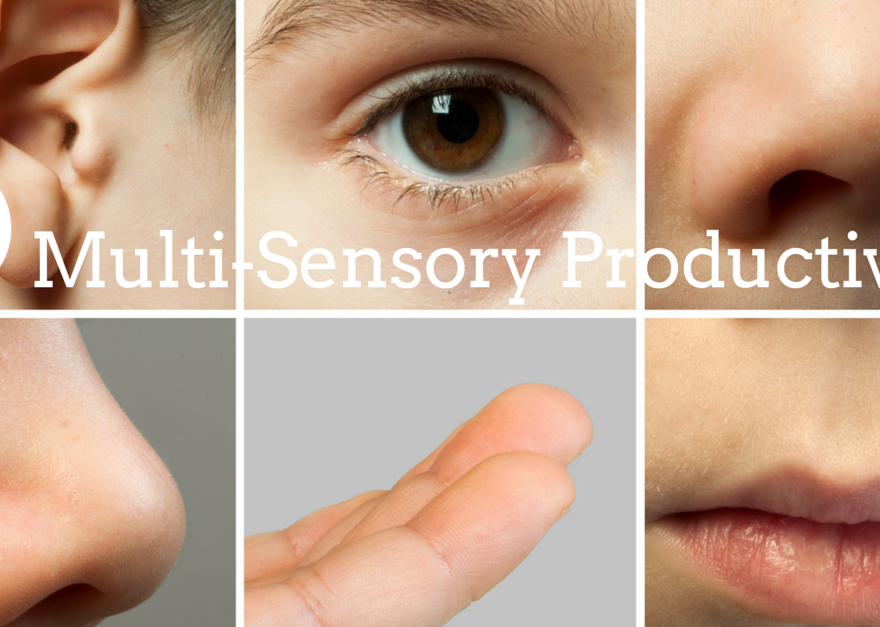Humans have five common senses. (We actually have several more senses not commonly discussed.) Your sense of touch is mostly dedicated to your largest organ, your skin, comprising 22 square feet (or, 2 square meters), which holds millions of touch receptors of various sensitivity to map your physical surroundings. Your five fingers on each hand alone contain 3,000 touch receptors of the highest sensitivity on each finger tip. Then, there’s your sense of sight, which is the reigning champion of information collection for the brain, provided for by your eyes’s millions of light-sensitive cells. Next up, we have our hearing from our ears and second-most valuable information-gatherer. Finally we have smell and sound caught by our noses’ six million receptors and our tongues’ 10,000 taste buds. Altogether we have a sensory experience unrivaled by any other animal on the planet because of our remarkably curious neurocognitive abilities. Thanks to this, I think we should pay more attention to how we can be more productive in multisensory ways.I’d like to provide the benefits and some examples in this episode.
We are overloaded on a daily basis by our sense of sight; collecting 10 million bits per second, that’s approximately 72 gigabytes of data collected per day of your life. Also, our hearing is bombarded with audio. Americans, for example, purposefully consume about 34 gigabytes of information daily, and of that, nearly six gigabytes is solely audio (which doesn’t include computers, games, movies, television and more that include audio). This is a tremendous amount of information flooding our brains. If you haven’t heard the term notification fatigue, this is where you stop responding to the audio-visual notifications on your mobile devices because you’ve started to psychologically tolerate the stimuli. Notifications tax the brain and diminishes your abilities to respond to those stimuli; logically, your brain is wasting energy filtering out this information which leaves you with reduced willpower–less impulse control and greater indecision.
For more productivity, why not offset the load for triggering your actions based solely on sight and hearing? By spreading out the stimuli across your other senses–in the right amounts and times–you’re giving your brain a stronger capacity to differentiate productive contexts.
Here are a few examples:
-
The simplest is to turn off all notifications on your phone but the most important. Do you really need that ding every time you get an email? Or text message?
Quick tip: You can actually set different audio tones for individuals who call you. So, for me, my mother has her own distinct notification sound when she calls or text messages me. This reduces cognitive load substantially because if I hear that tone, I reflexively know how to react through habit formation.
- On most phones today, instead of the visual or audio notification, you can set your mobile to vibrate. While most people use this for all notifications during meetings, I think there are much better uses. I use it to alert me about meals and snack times. The short vibration tells me it’s time to eat, which makes me actually get hungry and overcomes my tendency to work through meals. You can do this for a myriad of life and work circumstances. One use I’ve heard is to have a phone vibrate during meetings to tell you when it’s time to start wrapping things up and getting next-actions identified so you can end on time.
- Finally, there’s nothing like engaging your sense of taste and smell to trigger better productivity. I have a morning ritual to eat my mid-morning snack (yogurt with fruit) and start my daily writing regimen. I play a specific music and with a binaural beats track behind it to stimulate my mindset. However, it’s now that taste of yogurt that always makes me want to write. I don’t have writer’s block or hesitation. My taste and smell of that specific yogurt with fruit triggers the activity with no need for my phone to beep or flash at me and no discernable resistance to the task at hand.
As you can see, multi-sensory productivity has so many applications. It’s really a matter of how you plan it out, build your tools to engage you in a multi-sensory way (limiting audio and visual stimuli in better ways), and build habits around more taste, touch and smell.

